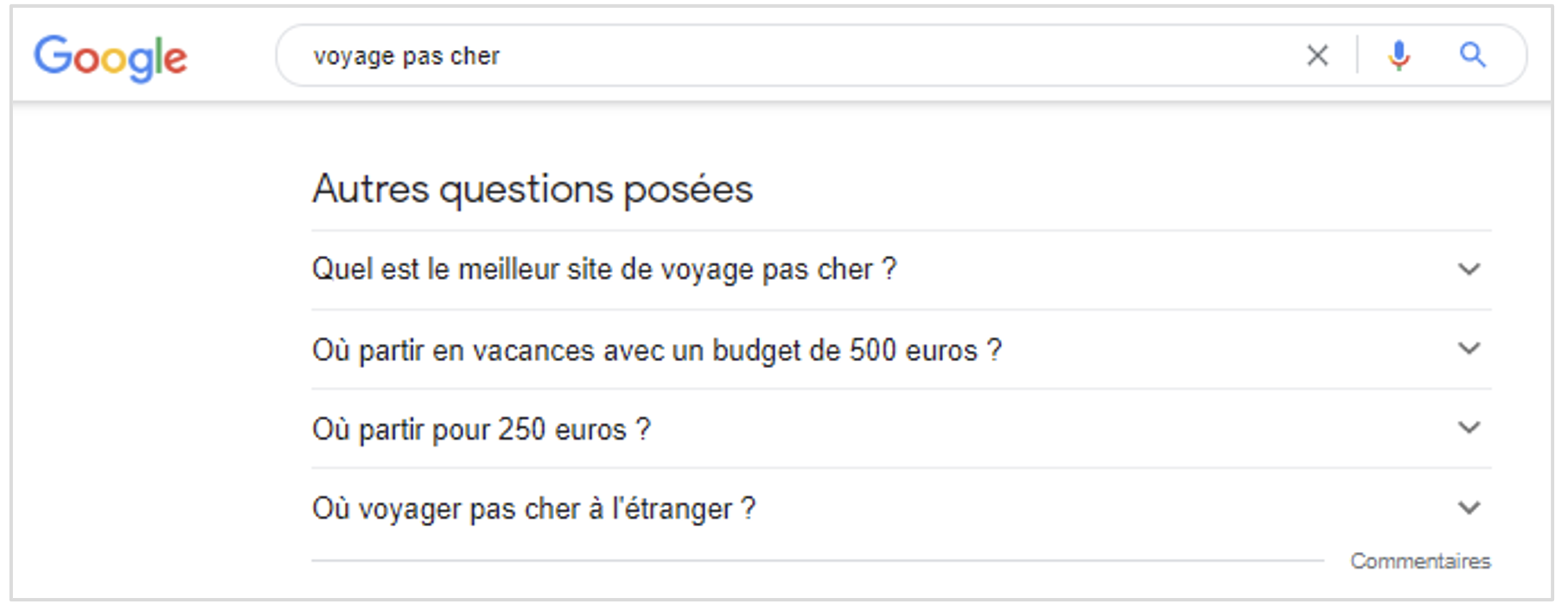
Launched in 2015, Google’s “People Also Ask” feature allows users to discover new questions related to their topic. Since its appearance it has been deeply rooted in the arsenal of anyone dealing with web content, because it allows very quickly to have ideas for new pages to create or to enrich existing pages. In this two-part series, we’ll dive into the world of People Also Ask questions. We will discuss their origin and peculiarities of operation, their penetration rate in French search results and effective techniques to position themselves there.
Questions and SEO
Every day we turn to search engines to find answers to our questions. Our requests can take the form of grammatically correct questions (explicit questions), but also remain quite concise, the questions being formulated only in our heads (implicit questions).
- Explicit question example: Where to refuel?
- Implicit question example: Essence.
From the point of view of a search engine, any question from a user can be seen as a question about a particular need. But some Internet users are used to making more specific requests than others. And this creates a real challenge for the search engine: to satisfy the specific need based on very general search queries.
In an eternal search for relevance, modern engines continuously provide their search pages with elements that allow Internet users to specify their needs. This is where search suggestions, related searches, and other similar systems were born.
All search verticals are also working towards the same goal: Google News (What’s the latest gasoline news?), Google Local Packs (What petrol stations are nearby?) etc.
“People also ask” or “More questions asked”
Deployed in the United States in 2015 and in France at the end of 2017, the “People Also Ask” widgets (which we will later call PAA in the article) or “Other questions asked” in French continue this research work on the accuracy of requests for internet users. In response to an entered keyword, the widget displays by default a list of 4 associated questions. The list is dynamic in the form of an accordion – new questions appear with each click on a question.
At launch, PAA question boxes were only integrated at the top of search results:

Displaying the PAA block at the top of Google results.
Over time, they proved their effectiveness and began to appear in other places as well. For example, since June 2022, if you interact with a question at the top of the page and scroll down the page, a new PAA widget dynamically appears at the end:

If you interact with one of the PAA questions and go to the bottom of the Google page,
a new PAA block appears before the pagination.
#People #1st #part #SEO #engines #news







Comments
Post a Comment